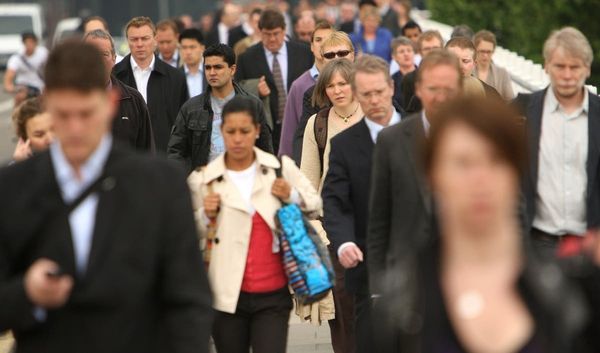
Girls born in the poorest areas of England will have almost 20 fewer years of good health compared with those in the wealthiest, according to figures that also reveal overall life expectancy in the most deprived areas has dropped significantly.
Female healthy life expectancy at birth in the most deprived areas was 19.3 years less than in the least deprived areas in 2018 to 2020, according to the Office for National Statistics (ONS). For males it was 18.6 years less.
Last week the Guardian revealed that women in the poorest areas of England were dying earlier than the average female in almost every comparable country. MPs and health experts described the revelation as devastating and unacceptable.
Now the ONS figures show life expectancy in the most deprived areas of England fell significantly in the three years to 2020, and the inequality gap to people living in the least deprived areas grew wider.
The start of the Covid-19 pandemic in early 2020 is likely to have influenced the changes in life expectancy, with the most deprived areas experiencing the highest rates of deaths from the virus. It is too soon for the data to reflect the full impact of Covid-19, however.
There was a significant decrease in life expectancy for both women and men living in the most deprived areas of England between 2015-17 and 2018-20, the ONS said. For females, life expectancy at birth in 2018-20 was 78.3 years, down from 78.7 in 2015-17. For males it fell from 74 to 73.5 years.
David Finch, the assistant director of healthy lives at the Health Foundation, said the data highlighted that there had been greater falls in life expectancy in the poorest areas of England than in the wealthiest.
“It also highlights that in the most deprived areas, people are living more of their life in ill health,” he said. “Girls born in the poorest areas of England live 19 fewer years in good health than those born in the wealthiest. A staggering difference in life chances.”
Finch said reducing the stark inequalities required a “fundamental shift” to a whole-government approach that fosters the conditions needed for good health, such as adequate incomes to cope with the rising cost of living, secure jobs and decent housing. “The upcoming disparities white paper presents a clear opportunity to move beyond the rhetoric and into action,” he said.
The ONS figures also show statistically significant increases in inequality in life expectancy at birth for both sexes. Men in the most deprived areas of England were living 9.7 years fewer than those in the least deprived areas in 2018-20, compared with a difference of 9.3 years in 2015-17. The gap for women was 7.9 years in 2018-20, up from 7.5.
Not only do men and women in the most deprived areas have shorter life spans overall but they also live a larger number of years in poorer states of health.
In 2018 to 2020, male healthy life expectancy at birth in the most deprived areas of England was estimated at 52.3 years, compared with 70.5 in the least deprived areas. The gap for females was even wider, at 51.9 versus 70.7 years.
Years spent in poorer health fell progressively from the most deprived areas (21.2 years for males, 26.4 years for females) to the least deprived areas (12.7 and 15.6 years respectively). The ONS said: “With those living in more deprived areas also living shorter lives, this means that they spend a smaller proportion of their lives in good health.”










